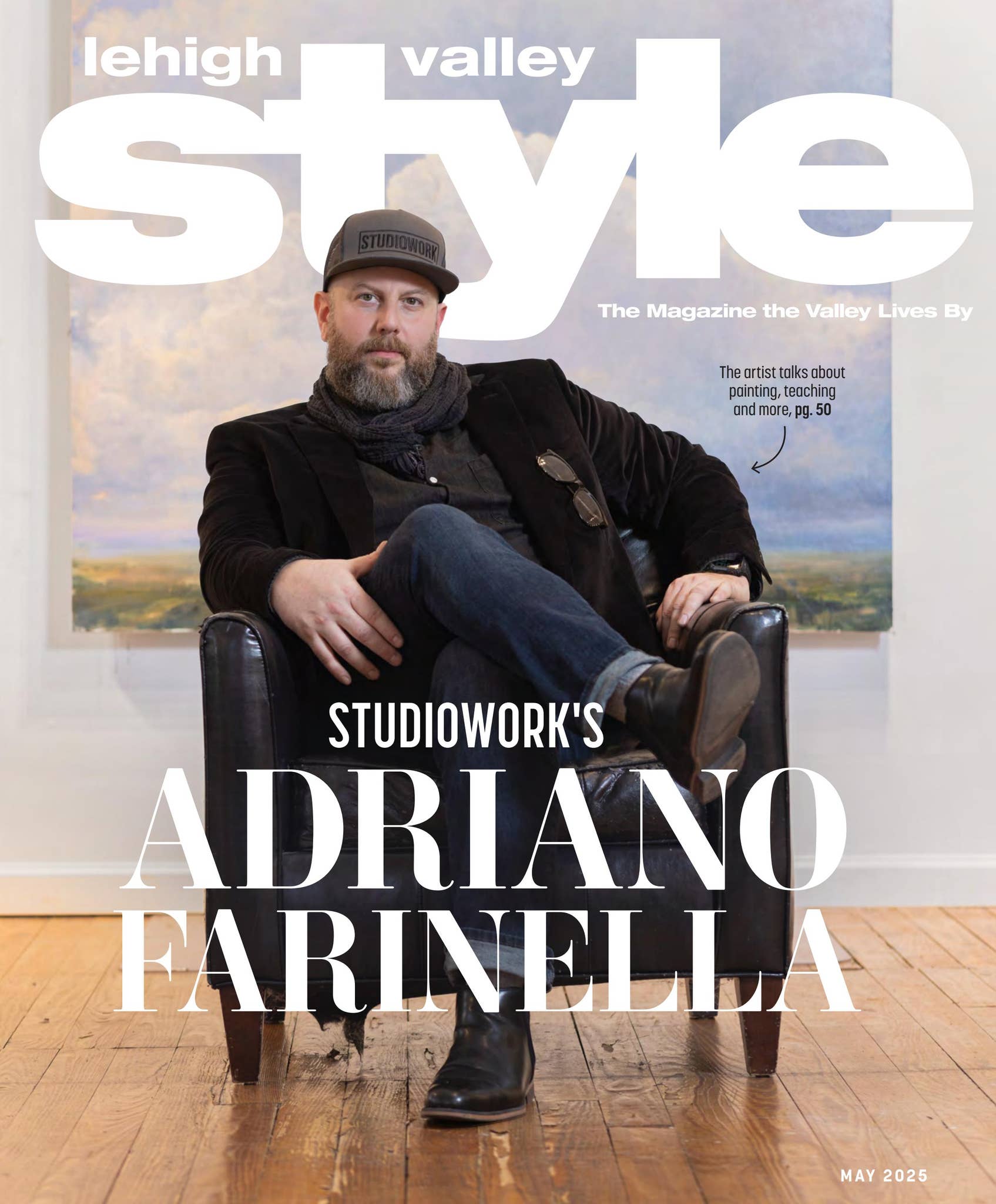For many, dreams evolve with time. For the owner of PA House, Franco DiCarlo, that evolution began in the fashion world and found its home in the heart of Pennsylvania. Now three years into its journey and entering its fourth season, PA House is more than just a restaurant—it’s an experience shaped by a lifetime of creativity, travel and family collaboration.
“I think that life experiences, travel and ultimately my upbringing informed what became this,” the owner reflects. Growing up in Michigan with roots in Rome, Italy, his background is a story of contrasts—Midwest garages and European aesthetics, small-town familiarity and metropolitan sophistication. These opposites became the foundation of PA House’s identity. “Cool but humble, refined but relaxed, familiar but unique,” DiCarlo explains. “There are all these contradictions or opposites, if you will, and that’s the philosophy we’ve taken through everything.”
Before opening the restaurant, DiCarlo spent years in the fashion industry, traveling frequently to Italy and Europe. This experience shaped not only his sense of style but also his approach to hospitality. “Fashion and hospitality parallel each other very closely,” he shares. “Both are about point of view, aesthetics, social trends and storytelling—the majority of any luxury brand is storytelling, and I think this is no different.”
PA House is situated in a former automotive garage, a deliberate nod to DiCarlo’s childhood. “Growing up in Michigan, garages were gathering places. You’d drive by, see someone in the garage, and just pull in. It was symbolic of connection and community,” he recalls. When he and his wife, Rachel, found the space, they immediately saw the potential. “I thought it’d be just a great location for that very reason.”
Family truly is at the heart of PA House. The DiCarlos describe it as “a family affair,” with their children playing integral roles in the restaurant’s creation. Their daughter, Juliet, a graphic designer, handled the branding. The name itself came from their son, Adrian, inspired by the family’s weekend trips between New York City and Pennsylvania. “The kids would always ask, ‘What are we doing this weekend?’ and we’d say, ‘We’re going to the PA house.’ So that’s how the name came about.”
The menu, described as “modern American with an Italian soul,” reflects the owner’s heritage. “We don’t take shortcuts. We only use the finest ingredients. And at the end of the day, simplicity reigns supreme,” DiCarlo explains. The commitment to quality is evident in every dish, echoing a philosophy learned from his mother, who baked bread weekly for the family.
Today, as guests gather at PA House, DiCarlo still feels a sense of wonder. “Seeing people come in, sit at tables we designed, and enjoy what we created—it’s something that will never be lost on me,” he says. PA House stands as a testament to the power of dreams that evolve, grow and, ultimately, come home.
For him, that taste of love is found in the memory of his mother’s frittelle—simple pieces of bread dough fried until golden, then shaken in a paper bag with powdered sugar and eaten hot. Each week, as his mother baked bread for the family’s school lunches and his father’s sandwiches, she’d save a piece of dough just for him. It was a tradition rooted in their Italian heritage, passed down through generations. While other cultures have their versions—zeppole from southern Italy and French beignets—frittelle from central Italy are unique, made from bread or pizza dough. The warmth and sweetness of those freshly fried treats stayed with DiCarlo, quietly shaping his lifelong love for donuts and inspiring dishes that now stand as signature items on his menu. It’s a reminder that food is more than ingredients—it’s a connection to the past, a reflection of family and, above all, a flavor infused with love. “The number one ingredient in any dish isn’t written on a recipe card—it’s love,” says DiCarlo. “That’s why your mom’s food always tastes so unbelievably good.”

Frittelle
INGREDIENTS
1 ¼ cups (300ml) warm water (about 110°F or 45°C)
2 ¼ teaspoons (1 packet) active dry yeast or instant yeast
3 ½ cups (440g) all-purpose flour or bread flour
1 teaspoon salt
1 tablespoon olive oil or melted butter
Vegetable or canola oil for frying
1 cup powdered sugar
INSTRUCTIONS
Activate the yeast (if using active dry yeast): In a small bowl, mix warm water with yeast. Let it sit for 5-10 minutes until foamy. If using instant yeast, mix it directly with the flour in the next step.
Mix the dough: In a large mixing bowl, combine the flour and salt. Add the activated yeast mixture and olive oil or melted butter. Stir until a shaggy dough forms.
Transfer the dough onto a lightly floured surface and knead for about 8–10 minutes until smooth and elastic. If using a stand mixer with a dough hook, knead for about 5–7 minutes on medium speed.
Place the dough in a greased bowl, cover with a damp towel or plastic wrap and let it rise in a warm place for about 1–1 ½ hours, or until doubled in size. Gently punch down the risen dough to release air bubbles. Cover and let it rise again for about 30–45 minutes.
Transfer the dough onto a lightly floured surface. Roll or stretch it into 1-inch thick strands. Cut into 2–3 inch long pieces or leave them in random lengths.
Heat about 2 inches of oil in a deep pan to 350°F (175°C). Fry the dough pieces in batches for 2–3 minutes per side, until golden brown and puffed up. Remove with a slotted spoon and drain on paper towels.
Place the warm fried dough pieces into a brown paper bag. Add powdered sugar, fold the top of the bag, and shake well to evenly coat the pieces. Serve warm.
Published as “Beyond the Menu” in the May 2025 edition of Lehigh Valley Style magazine.















